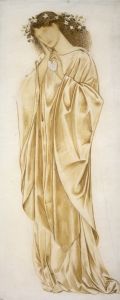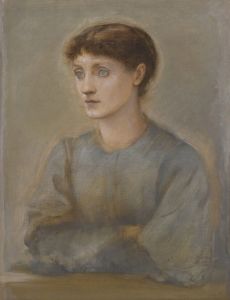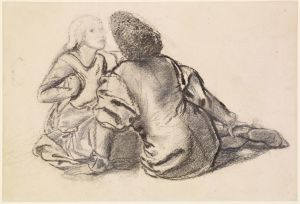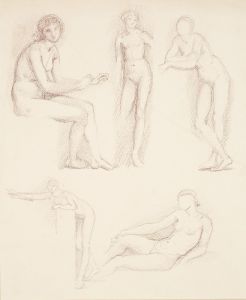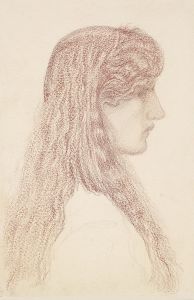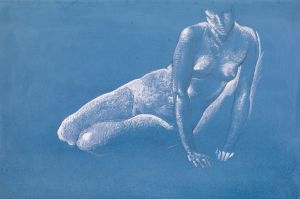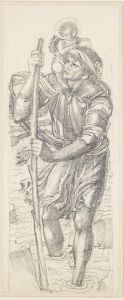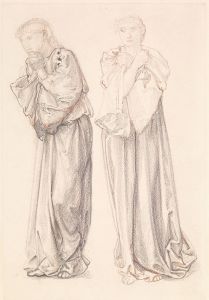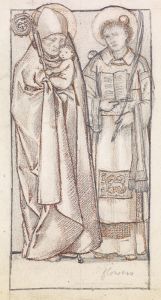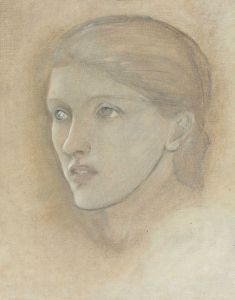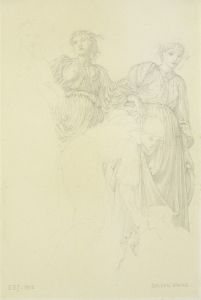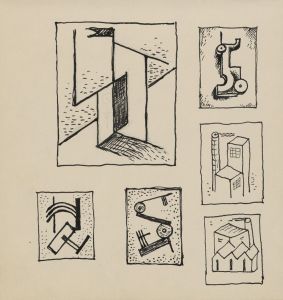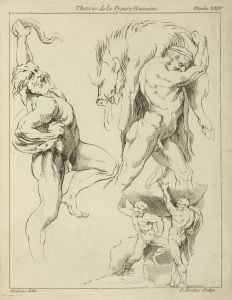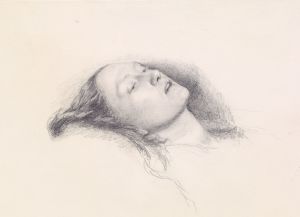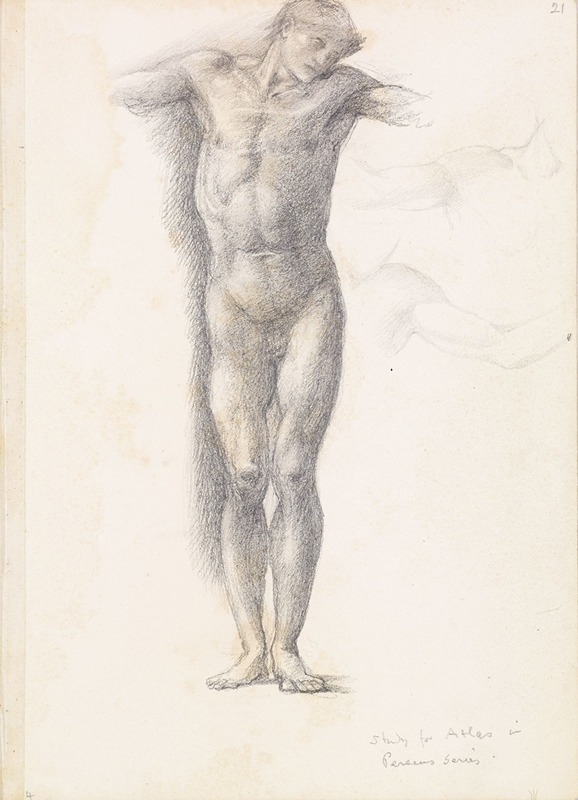
Sketchbook – Study for Atlas in Atlas Turned to Stone
A hand-painted replica of Sir Edward Coley Burne-Jones’s masterpiece Sketchbook – Study for Atlas in Atlas Turned to Stone, meticulously crafted by professional artists to capture the true essence of the original. Each piece is created with museum-quality canvas and rare mineral pigments, carefully painted by experienced artists with delicate brushstrokes and rich, layered colors to perfectly recreate the texture of the original artwork. Unlike machine-printed reproductions, this hand-painted version brings the painting to life, infused with the artist’s emotions and skill in every stroke. Whether for personal collection or home decoration, it instantly elevates the artistic atmosphere of any space.
Sir Edward Coley Burne-Jones, a prominent figure in the Pre-Raphaelite movement, is known for his intricate and imaginative works that often draw on classical mythology and literature. One of his notable pieces is "Sketchbook – Study for Atlas in Atlas Turned to Stone." This work is a preparatory study for a larger project, reflecting Burne-Jones's meticulous approach to composition and detail.
Burne-Jones was born in Birmingham, England, in 1833 and became a key member of the Pre-Raphaelite Brotherhood, a group of artists who sought to return to the detail, intense colors, and complex compositions of Quattrocento Italian art. His works often feature themes from mythology, religion, and medieval romance, characterized by a dreamlike quality and a focus on beauty and emotion.
The subject of Atlas is a figure from Greek mythology, known for his role in bearing the weight of the heavens on his shoulders. In various mythological accounts, Atlas is depicted as a Titan who was punished by Zeus to hold up the sky for eternity. This image of endurance and strength has been a popular subject in art and literature throughout history.
"Sketchbook – Study for Atlas in Atlas Turned to Stone" is part of Burne-Jones's exploration of mythological themes. Although specific details about this particular sketchbook study are limited, it is likely that Burne-Jones was experimenting with the composition and form of Atlas as part of his creative process. Sketchbooks were an essential tool for Burne-Jones, allowing him to refine his ideas and develop the intricate details that would characterize his finished works.
Burne-Jones's sketches often reveal his interest in the human form and his ability to convey emotion through posture and expression. In studies like this one, he would explore different poses and perspectives, considering how best to capture the essence of the mythological figure. His attention to detail and commitment to preparatory work are evident in the precision and care with which he approached these studies.
The larger project for which this study was intended, "Atlas Turned to Stone," is not as well-documented as some of Burne-Jones's other works, but it fits within his broader oeuvre that frequently revisits themes of transformation and the interplay between the mortal and the divine. Burne-Jones's fascination with these themes is reflected in his other works, such as "The Perseus Cycle" and "The Briar Rose Series," where he similarly explores mythological narratives with a focus on transformation and fate.
Burne-Jones's influence extended beyond his own works; he was a central figure in the Arts and Crafts Movement, which emphasized traditional craftsmanship and the inherent beauty of materials. His approach to art, characterized by a blend of romanticism and meticulous craftsmanship, left a lasting impact on the art world, inspiring future generations of artists.
In summary, "Sketchbook – Study for Atlas in Atlas Turned to Stone" exemplifies Sir Edward Coley Burne-Jones's dedication to exploring mythological themes through detailed preparatory work. Although specific information about this study is limited, it reflects his broader artistic interests and his role as a key figure in the Pre-Raphaelite movement.





